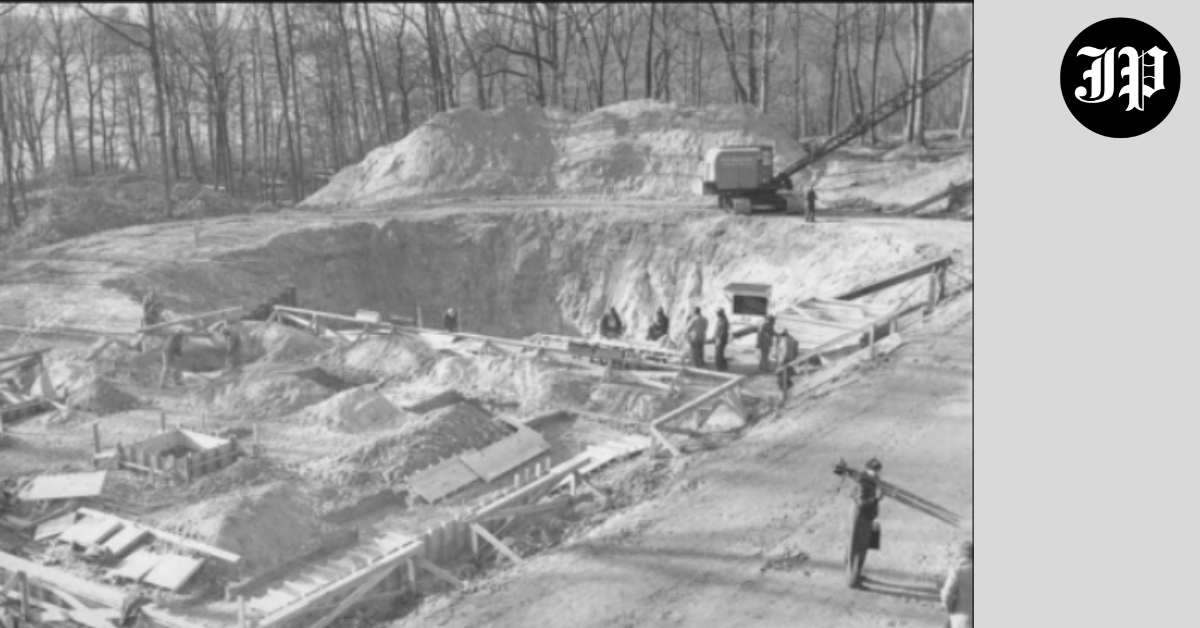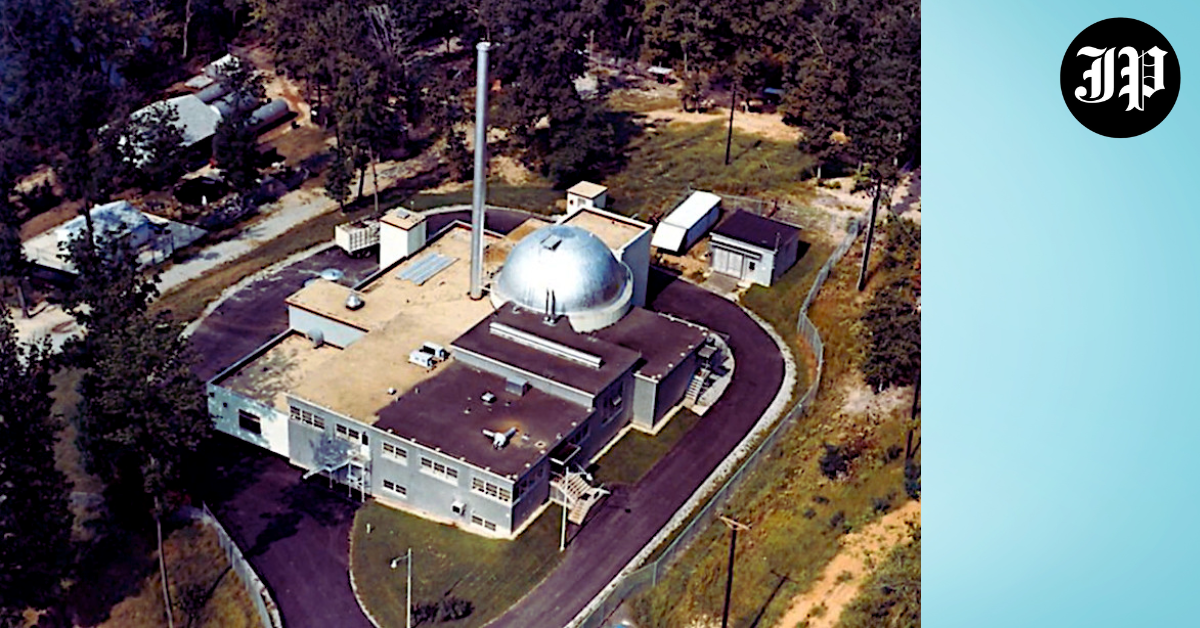A Historical Review of its Development and Impact
The SM-1 Nuclear Reactor at Fort Belvoir: A Nuclear Innovation
In the latter half of the 20th century, amidst the peak of the Cold War, the United States focused its energies on developing nuclear technology not just for weaponry, but also for more constructive and peaceful applications. An embodiment of this was the SM-1 Nuclear Reactor, built and operated at Fort Belvoir by the US Army Corps of Engineers.
This reactor was a significant development in the nuclear propulsion systems of the time, paving the way for more efficient and practical applications of nuclear energy, from submarine propulsion to land-based power plants.
The Birth of the Army Nuclear Power Program
In a time when the Department of Defense was segmenting responsibilities for developing nuclear technology, the US Army was given the task of developing small nuclear power plants for supporting land-based facilities. The Army Nuclear Power Program found its home at Fort Belvoir, where the Corps of Engineers managed to build and test two small nuclear power plants at Gunston Cove.
The SM-1 reactor, the first of its kind, was an early example of what the military envisioned as an easily-deployable, compact, and efficient source of electricity. This was a considerable part of President Eisenhower’s “Atoms for Peace” initiative, which proposed the use of nuclear power for more peaceful applications, even considering nuclear-powered aircraft and locomotives.
Unpacking the SM-1 Reactor: How it Worked
The SM-1 reactor was a pioneering design, using enriched uranium fission to generate heat, which was then converted into electricity. The uranium used in this process was unique, but the turbine was a conventional design, which used magnets moving inside coiled wires to generate electricity. The reactor was cooled by water sourced from the Potomac River.
Advancements in Nuclear Power Plant Operations
The SM-1 reactor was expected to operate for two years without refueling and managed to run from April 1957 to March 1973, with only two refueling operations. The Department of Energy accepted the used fuel cores, emphasizing the importance of nuclear safety and waste management in the operation of such facilities.
The Role of the Private Sector: Construction and Operation
The SM-1 reactor was not built by military personnel or equipment. Instead, it was constructed by private firms, using the reactor design as the basis for their bids. American Locomotive Company (Alco Products) won the contract with a low bid of $2,096,753, and the reactor was completed in 1957.
SM-1’s Impact: Lighting up Virginia
The SM-1 reactor was the first nuclear power plant to generate electricity in Virginia, and it became operational in April 1957. It was a solution for providing electricity to places that were off the grid, making it a safer, cost-effective alternative to continuously hauling diesel fuel to forward bases.
After 16 Years of Service: Decommissioning of the SM-1
After 16 years of service, the SM-1 reactor was shut down in 1973. When the reactor was decommissioned, the fuel rods, control rods, and waste with radioactive material were removed and sent for safe disposal to the Department of Energy’s Savannah River Site in South Carolina.
Legacy of the SM-1: A Historic Site and Future Possibilities
The site of the SM-1 reactor is historic but its potential is not confined to the past. The Army Nuclear Power Program’s vision for battlefield power from nuclear reactors remains alive, with modern advancements making this.In a daring venture that utilized cutting-edge technology and innovative techniques, the SM-1 reactor began its operation in April 1957, becoming the first nuclear power plant to generate electricity in Virginia. The 2-megawatt plant was constructed by Alco Products for $2,096,753, a company known for its expertise in building high-pressure boilers for steam locomotives.
SM-1: The Pioneer of Atomic Energy
The SM-1 reactor was more than just a power plant. It served as a symbol of President Eisenhower’s “Atoms for Peace” initiative and was seen as an early model of what the military expected to be many small, easy-to-deploy nuclear power plants built for locations without electricity.
The SM-1 reactor, stationed at Fort Belvoir, functioned for 16 years and was primarily used for training purposes, helping to produce 800 nuclear power plant operators. In addition to this, the reactor supplied electricity to the military base and also served as a testing ground for designing small reactors.
[inline_related_posts title=”You Might Be Interested In” title_align=”left” style=”list” number=”3″ align=”none” ids=”” by=”categories” orderby=”rand” order=”DESC” hide_thumb=”no” thumb_right=”no” views=”no” date=”yes” grid_columns=”2″ post_type=”” tax=””]
The Journey to Decommissioning
After 16 years of dedicated service, the SM-1 reactor was decommissioned in 1973. All nuclear materials, including fuel rods, control rods, and radioactive waste, were carefully removed and sent for safe disposal to the Department of Energy’s Savannah River Site in South Carolina. The Reactor Containment Vessel was sealed, with the Reactor Pressure Vessel inside.
A Decades-Long Wait
In a calculated move, the decommissioned site was put under the “safe storage” (SAFSTOR) custodial status, allowing residual radioactivity to slowly dissipate. This led to a considerable decrease in risk from radiation during final decommissioning, saving resources, and reducing complexity in the decommissioning efforts.
The Final Chapter in Decommissioning
Phase 1: Planning and Procurement
In 2019, the US Army’s Deactivated Nuclear Power Plant Program (DNPPP) announced plans to dismantle Building 372, the structure housing SM-1. The contract proposal for the final removal of the 16-ton pressure vessel and its 30-ton shield rings emphasized the need for special planning and engineering.
Phase 2: Execution
The U.S. Army Corps of Engineers, in 2020, awarded a $68 million contract for the “decommissioning, dismantling, and disposal of the deactivated SM-1 nuclear power plant”. The decommissioning process was meticulous and followed a strategic plan to minimize disturbance and optimize disposal. As of the end of 2022, only the Vapor Container and the Spent Fuel Pit remained to be demolished. Total removal is projected to be completed by 2025.
The Aftermath
Towards a Radiologically Safe Site
A significant aspect of the decommissioning process was the intent to clean up the site thoroughly to release it for unrestricted use. The Nuclear Regulatory Commission’s radiological dose criteria were adhered to ensure that the site could be safely repurposed without any risk of radiation.
The Future: Small Modular Reactors
The dream of battlefield power from nuclear reactors, which began with SM-1, continues to live on. The Department of Defense anticipates that small (1MW-10MW) nuclear reactors can be manufactured in portable modules for remote operating bases. These reactors would be transportable by truck, ship, and C-17 aircraft, and could go into operation within 72 hours of arrival on site.
The Legacy Continues
The SM-1 reactor, a symbol of innovation and forward-thinking, leaves behind a legacy that continues to influence the development of small modular reactors. Its journey from inception, operation, decommissioning, to safe disposal stands testament to the power of human to condense thread for reading.
Rekindling Eisenhower’s “Atoms for Peace” Vision
As we glance back at the SM-1 reactor’s history, we are reminded of President Eisenhower’s grand vision of “Atoms for Peace.” The operation of the SM-1 reactor ignited a spark that continues to fuel the development of nuclear energy, a cornerstone of sustainable, clean energy solutions. Today, more than ever, our society stands on the brink of a new era of atomic energy, as we innovate to overcome our global energy challenges.
[inline_related_posts title=”You Might Be Interested In” title_align=”left” style=”list” number=”2″ align=”none” ids=”” by=”categories” orderby=”rand” order=”DESC” hide_thumb=”no” thumb_right=”no” views=”no” date=”yes” grid_columns=”2″ post_type=”” tax=””]
Triumph of Human Innovation: The SM-1 Reactor
The journey of the SM-1 reactor from its commissioning to its final decommissioning represents a triumph of human ingenuity and technological prowess. Its story is not just about a nuclear reactor; it’s about our unwavering spirit to harness nature’s formidable power for human progress. The SM-1 reactor was a shining testament to our pioneering spirit, one that continues to propel us towards further innovation in the atomic energy sphere.
[penci_video url=”https://www.youtube.com/watch?v=RROX42QbljA&ab_channel=USACEBaltimore” align=”center” width=”” /]
Small is Powerful: The Promise of Small Modular Reactors
The dream of small, deployable nuclear power that SM-1 kindled in 1957 is far from extinguished. On the contrary, it is experiencing a resurgence with the concept of Small Modular Reactors (SMRs). As we venture into the future, SMRs promise to provide resilient power to remote areas, embodying the same spirit of innovation that brought the SM-1 reactor to life. It’s an exciting leap towards realizing the full potential of atomic energy, forever inspired by the pioneering legacy of SM-1.
The Enduring Legacy of SM-1: An Opinion from Journal Press
In the world of energy generation, nuclear power remains a divisive issue. However, there’s no denying the impact of historical feats such as the construction and operation of the SM-1 nuclear reactor. Developed in the late 1950s, SM-1 was not just a nuclear reactor – it was a symbol of ingenuity, a testament to human endeavor, and a bold step towards the future of energy.
SM-1 wasn’t built to power a city. It wasn’t designed to light up millions of homes. Its purpose was much more specialized, yet no less significant. Constructed at Fort Belvoir, the SM-1 reactor was the U.S. Army’s response to a unique challenge: How can we generate power in remote, off-grid locations?
The answer came in the form of SM-1, a compact, stationary nuclear reactor capable of producing up to 10 megawatts of power. This reactor was not just the first of its kind in Virginia, but also a pioneering model connected to an electrical grid, ahead of the commercial Shippingport Atomic Power Station in Pennsylvania.
This venture wasn’t without its risks, but the courage to face those risks head-on was what set the SM-1 project apart. The implications of SM-1 were significant, proving the viability of nuclear energy as a reliable power source, even in challenging conditions. Despite decommissioning in 1973, SM-1’s legacy endures, influencing the development of today’s Small Modular Reactors (SMRs), capable of providing power to off-grid locations.
However, this journey towards an atomic future was not without its bumps. Decommissioning SM-1 and managing the radioactive waste was a challenge in itself, requiring careful planning and meticulous execution to ensure safety and environmental preservation. But as with all technological advances, the lessons learned from these challenges have led to improved practices in managing nuclear technology today.
The decommissioning of SM-1 might signify the end of an era, but it is far from being a full stop. In fact, it marks the beginning of a new chapter in our pursuit of sustainable, reliable power sources. The lessons learned from the SM-1 project continue to guide us, and the dream of a nuclear-powered future lives on, fueled by the courage and ingenuity demonstrated over six decades ago.
Here at Journal Press, we celebrate the legacy of SM-1, recognizing its significant contribution to the world of nuclear power. As we move forward, we believe that the spirit of innovation, daring, and foresight that drove the SM-1 project will continue to inspire and shape the future of energy generation. SM-1 is not just a reactor; it is a beacon of progress, and its light continues to guide us in our journey toward a sustainable, nuclear-powered future.





